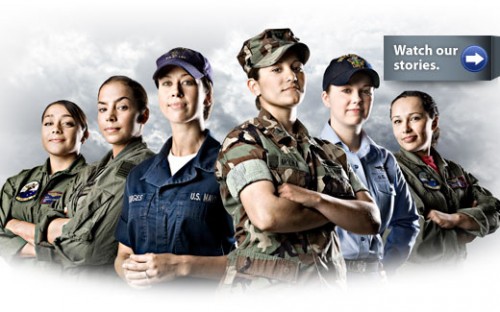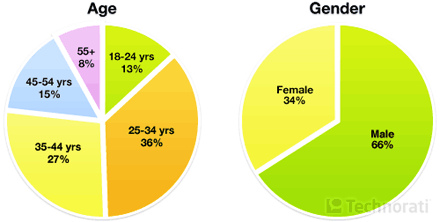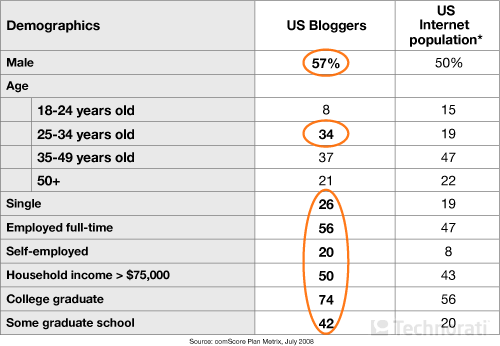Nora R. pointed out a Navy Facebook page that presents female members of the Navy as ground-breaking women who redefine femininity. The photo:

Here’s the text below the photo:
Applauding women who define life on their own terms. Intermingling the stereotypically feminine and masculine. Women in the Navy are amongst those paving the way in redefining femininity in the 21st Century.
I think it’s fascinating that they refer to feminine and masculine characteristics as stereotypes, rather than simply saying they mix feminine and masculine traits (thus accepting them as meaningful categories).
I went over to the Navy page on women from Facebook. Another image:

Some text from that webpage, which again emphasizes equality, empowerment, and the idea that ideas about gender are stereotypes, not accurate beliefs:
What’s it like being a woman in today’s Navy? Challenging. Exciting. Rewarding. But above all, it’s incredibly empowering. That’s because the responsibilities are significant. The respect is well-earned. The lifestyle is liberating. And the chance to push limits personally and professionally is an equal opportunity for women and men alike.
The notion of a “man’s work” is redefined in the Navy. Stereotypes are overridden by determination, by proven capabilities and by a shared appreciation for work that’s driven by hands-on skills and adrenaline. Here, a woman’s place is definitely in on the action. And women who seek to pursue what some may consider male-dominated roles are not only welcome, they’re wanted – in any of dozens of dynamic fields.
Besides equal pay for equal work, you can also look forward to the opportunity for personal development in the Navy. Take advantage of the chance to learn, grow, advance, serve and succeed right beside male counterparts – sharing the same duties and the same respect.
Farther down there’s this paragraph:
Spending time with family and friends. Going shopping. Getting all dressed up for a night out. As a woman, you’ll find there’s ample time for all of that in the Navy. Time when you’re off-duty. Time for the everyday things and the “girly stuff.” What you do as a woman in uniform may not be considered typical, but the life you lead outside of that can be as normal as you want.
I think the message there is partially that you don’t have to give up all the things associated with femininity if you’re in the Navy, but also the implication is that in the Navy you’ll be empowered and liberated to break stereotypes that you won’t be able to do as much in the outside world, where you may want to act more “normal.”
We’ve posted before about the use of female empowerment to sell products (see here, here, here, here, here, here, here, here, here, here, here, here, here, and here). In all of those instances, liberty or empowerment comes through simply consuming the right thing, whether it’s Virginia Slims, a better cleaning product, or a pre-packaged food item. It’s a completely superficial use of the idea of women’s liberation. In this Navy campaign, however, some very real advantages are promised: equal pay for equal work, respect, equal opportunity at work, the ability to enter “what some may consider” male-dominated fields.
Of course, that doesn’t mean all of these things happen. For instance, the Navy can say women are welcomed into male-dominated roles; that doesn’t mean the male soldiers are going to be thrilled and welcoming. After all, 26 female Navy members reported being sexually assaulted by fellow sailors in 1991. But the book The American Woman 2001-2002 lists the Navy as the branch of the military with the second-lowest levels of gender discrimination (after the Air Force; not surprisingly, the worst branch is the Marines) and says that after the 1991 Tailhook incident the Navy undertook major efforts to deal with gender discrimination. According to the book the Navy has “the largest number of women moving into nontraditional occupations” (p. 163). Women are allowed on combat vessels, while the Army still does not allow women in combat positions.
I don’t know. I have to say, this seems to be more of a sincere effort to recruit women by focusing on equality and skills than most I’ve seen, in which empowerment is depicted as taking on “masculine” roles or characteristics, and in which the idea that they are masculine isn’t questioned as a stereotype. I know many people will say that getting more women into the military isn’t necessarily a great advancement. But just as a marketing effort aimed at women, this is one of the more interesting ones I’ve seen, since it highlights specific types of equality (pay, etc.) as opposed to some vague idea of “liberation” and challenges the femininity/masculinity binary.
UPDATE: Reader Samantha C. says,
You know, I was all over this until the bit about “as a woman, you’ll totally still be able to go shopping and dress up tee hee”. And calling that life that of a “normal woman”. I just really hate those interests being universally assumed of all women.
I think it’s an excellent point.







